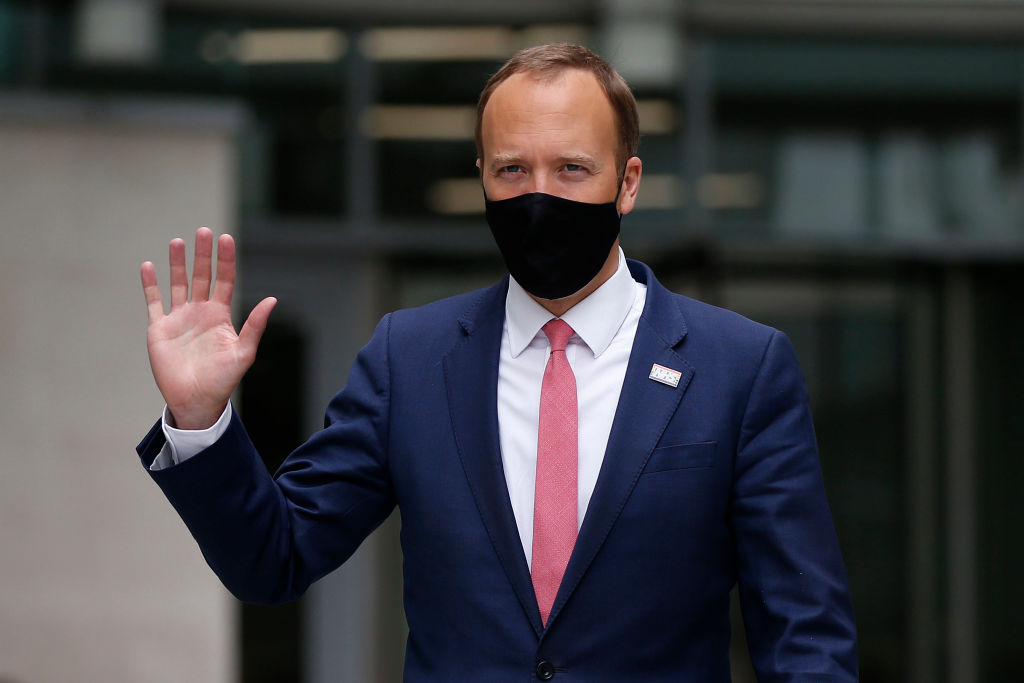Matt Hancock enjoyed an early boost in his evidence session to the select committees investigating the lessons learned from the government’s handling of the pandemic, when one of the committee chairs Greg Clark confirmed that Dominic Cummings had not submitted written evidence for the allegations he had made in his own session.
Those allegations included that Hancock had lied to the Prime Minister about testing of patients being discharged into care homes; that he had been told by the chief scientific adviser that not everyone who needed treatment received it; that the Cabinet Secretary had ‘lost confidence’ in the minister’s honesty; and that he had interfered in the expansion of testing capacity. Clark also said Cummings had provided no explanation for this failure to meet the deadline set by the committees.
Hancock referred to this failure a number of times, saying with some evident satisfaction that ‘much of the evidence has not been put forward for that testimony and I find that telling.’ He also spent a fair bit of time at the start of the hearing trying very pointedly to underline what he saw as his collegiate approach to the pandemic. The implication was clear: Cummings favoured chaos and confrontation, whereas Hancock was a team player. He denied all the allegations made – but was more forceful on some than others.
On care homes, Hancock said he had always told the Prime Minister the truth. He claimed that he had said testing of those discharged from hospital would happen and that he set to work building the capacity for this to happen. This was not what Cummings alleged. The former Downing Street aide said:
‘We were told categorically in March that people would be tested before they went back to care homes. We only subsequently found out that that hadn’t happened.’
At the end of the hearing, he channelled Meghan Markle and thanked the committees for giving him the opportunity to tell the truth
It’s a subtle but important difference: Hancock’s version of events is that he was clear that he was aiming for this testing to happen as soon as possible, whereas Cummings said that it only later became clear that testing hadn’t been taking place when Hancock had promised it already was.
Hancock also tried to claim that a Public Health England report had shown that just 1.6 per cent of care home outbreaks came from hospital discharges. But as Clark then politely pointed out, this wasn’t right: this figure was low because people were not being tested routinely at the time, and so the finding only applied to the outbreaks seeded by people who were confirmed to have Covid. ‘I think that study is the best assessment that can be made,’ Hancock responded. Organisations such as the National Care Forum disagree, saying the lack of testing means we will probably never really know the extent of the damage caused by discharging people without tests.
Hancock denied the claims about people not receiving the treatment they needed, and argued that he had moved swiftly to stop this being managed through the inappropriate imposition of ‘Do Not Attempt Resuscitation’ orders on those with mental illnesses and learning disabilities. And he was bullish on whether the deaths of healthcare workers really could be attributed to PPE shortages. He was only prepared to admit that, ‘it was pretty close sometimes but we did manage to ensure that at a national level we had the PPE.’
Hancock also disputed Cummings’ particularly dramatic claim that deputy cabinet secretary Helen McNamara had come to the Prime Minister in a panic about there being no plan to handle the pandemic and had warned that ‘we’re going to kill thousands of people.’ He said that, contrary to this quote, the plan had already been published. ‘I don’t understand that testimony,’ he said.
A curious moment in his long session came when he praised the Radio 4 programme More or Less, before jokingly asking what it had said about him. Had Hancock been following this statistics programme, he might have been less enthusiastic in his praise. It has examined how he met his testing targets by changing the way they were measured, and its presenters have been rather withering in their assessment of him. For Hancock, though, the testing target of 100,000 tests a day by the end of April 2020 was a good number to set because it galvanised the system. Others only distanced themselves because they didn’t have the faith that the target would be met, he argued, then claiming that he had subsequently found out what he’d done was a recognised management strategy.
At the end of the four-hour hearing, he channelled Meghan Markle and thanked the committees for giving him the opportunity to tell the truth about what had happened after Cummings’ explosive testimony. But like the interview the Duchess of Sussex and her husband gave to Oprah Winfrey, this won’t be the last stand-off over different ‘truths’ about the pandemic. Cummings won’t have forgotten about the deadline for his evidence. There is some suggestion he may have been waiting to hear what Hancock said before releasing the evidence. Even though submitting his evidence after the hearing shows a contempt of the MPs running the inquiry (which wouldn’t be out of character given the general low esteem in which Cummings holds parliamentarians), it will still reignite the political row. Hancock didn’t have a bruising hearing. But he also hasn’t ended the questions about his handling of the pandemic, or indeed about his future as Health Secretary.







Comments